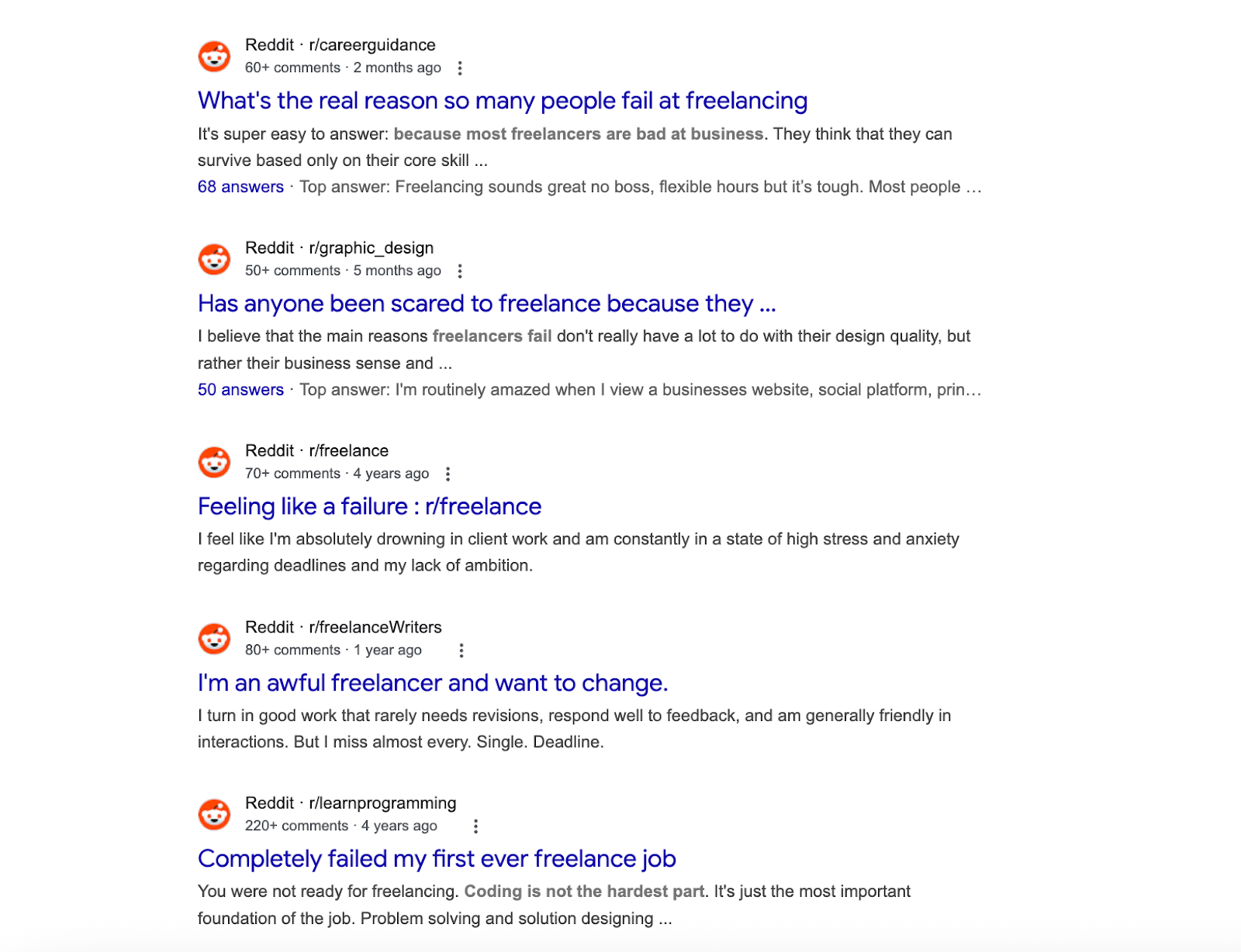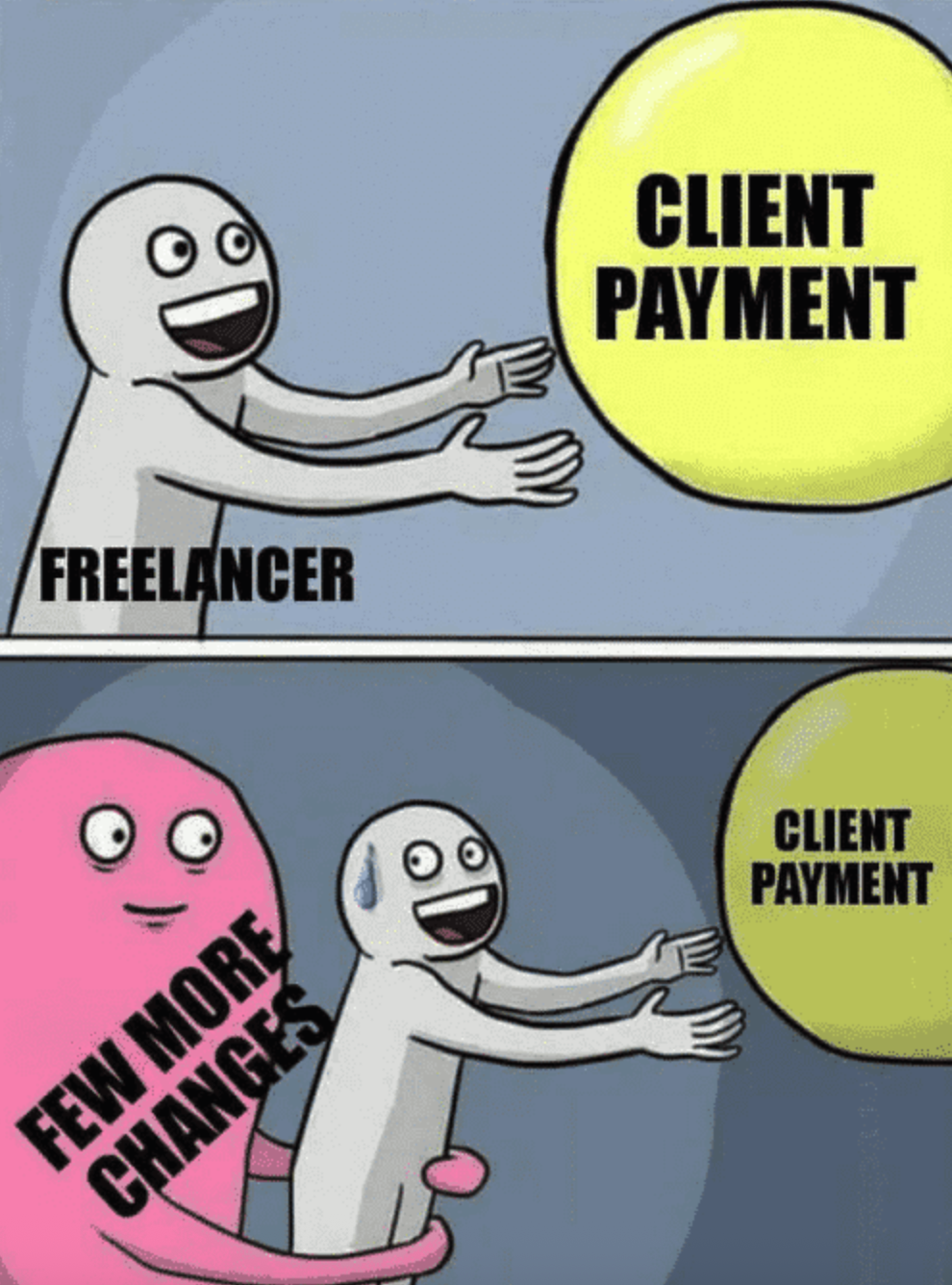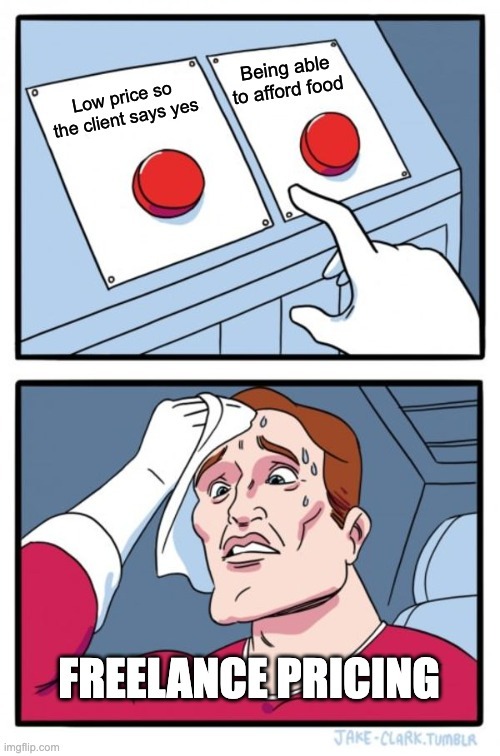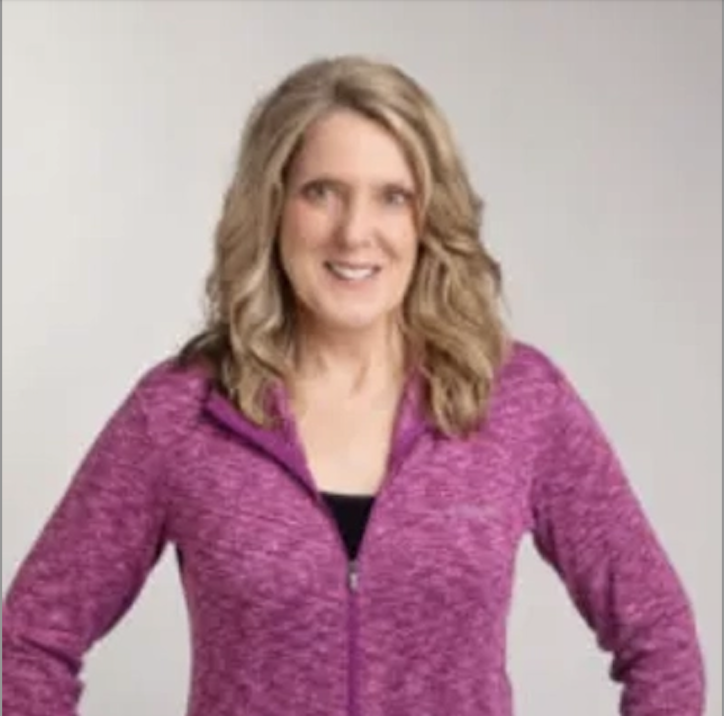Top 8 Reasons for Freelance Failure Every Solopreneur Should Know
8 common reasons freelancers fail, and how tiny changes in pricing, niche, marketing, and boundaries can turn everything around.
November 7, 2025
November 7, 2025

Key Points
- It’s easy to assume freelance failure is caused by a lack of talent, but actually the culprit is usually business structure issues.
- A small, clear niche can make you easier to find, trust, and remember.
- Saying yes to everyone and everything isn’t a good idea; it can damage your capacity and confidence.
- Try to be consistent with your branding and marketing; visibility is important for keeping current clients and finding new ones.
- To grow, don’t reinvent yourself; implement small changes consistently instead.
What even is freelance failure? It varies depending on where you are in your career or your area of expertise, but maybe you’re not earning as much as you’d hoped. Or maybe your clients are leaving you. Either way, you’re not alone in feeling stuck, and the most likely reason for this isn’t your lack of talent.
In this article, we’ll discuss common reasons why freelancers fail, and also what you can learn from people who’ve been there and turned it around.
Why freelancers fail (and why it’s not always what you think)
So, you’re freelancing, and things aren’t going as well as planned. It’s very easy to assume the problem is you, and you find yourself thinking you’re not talented enough, you’re making silly mistakes, or that you lack experience. In some cases, it may be true. But very often, the real reasons things go awry have nothing to do with your actual work. They’re business problems.

When you look at how freelancers talk about their problems or failings online, you start to see a pattern. People rarely blame their design skills, writing skills, or coding skills. Instead, you see comments like “most freelancers are bad at business,” or “I struggle to stick to deadlines.”
So, this is what this article is about.
Top 8 reasons for freelance failure and what you can learn from them
So, without further ado, here’s a list of top reasons people fail as freelancers, with real-life examples from people who’ve been there (and who managed to turn it around).
1. You don’t treat it like a business
If you’re good at something, be it writing, designing, coding, or anything else, it’s tempting to think of freelancing as just doing that. However, that’s only half of the job. As a freelancer or a solopreneur, you also have other things to think about, such as invoicing, following up, budgeting, tracking, negotiating, taxes, and other unglamorous bits of admin.
This is what trips a lot of freelancers up. It’s not that they lack talent, but they don’t run their work like a business. They avoid the admin, delay the paperwork, forget to follow up, or assume that doing good work is enough to get noticed. As boring as it sounds, freelancing is a business model and not solely a creative pursuit. Don’t ignore that part, or things will start falling apart quickly.
2. You don’t have a clear niche
When you’re starting out, it’s tempting to say yes to everything: websites, logos, brochures, app copy, blog posts, email funnels, social media. But the old saying is right: a jack of all trades is a master of none. Unfortunately, for freelancers, it also means that you’re running the risk of becoming forgettable.
A clear niche makes you easier to find, easier to remember, and easier to refer to. It also builds trust. Having a niche doesn’t mean locking yourself in it forever, too, you can always pivot or evolve later. But for the time being, it means extra clarity and memorability when working with clients. Here’s an example: something like “I write UX copy for fintech apps” is instantly more credible than “I do all kinds of content.”
3. You don’t make it easy to work with you
Around 2016, I landed a dream client — a boutique hotel that wanted a complete rebrand including website and promo video. I got so excited about the creative possibilities that I skipped my usual findy process and started designing based on what *I* thought would look amazing. Three weeks in, they hated everything. Turns out they wanted clean and minimal, but I'd gone full cinematic and dramatic. We salvaged it, but I had to eat 30+ hours of unbillable rework, and the relationship never fully recovered.
I assumed my taste was their taste. I'd gotten comfortable with my process and let my ego drive instead of asking the hard questions upfront — who's your actual customer, what action do you want them to take, what feeling should this create?
{{Christian Daniel}}
Let’s be clear, I’m not accusing you of being difficult on purpose. Most freelancers who struggle with client relationships are perfectly nice. But without realising it, you might be making your own work life harder than it needs to be.
Maybe you’re slow to reply to emails, or maybe your files are a mess. Maybe your process is a mystery to the client, and they’re just crossing their fingers and hoping for the best. Or maybe you’re like Christian, diving headfirst into the creative without ever asking what the client actually needs.
Try to make working with you smooth, reassuring, and collaborative. When it doesn’t, people start micromanaging, losing confidence, or disappearing altogether. That’s not always about the quality of your work; it’s about the experience of working with you. If this section sounds like something you’re struggling with, check out our guide on transforming a negative client experience to a positive one.
Now I'm almost annoying with my intake process. I make clients fill out detailed questionnaires, I ask about their customers' demographics and pain points, and I don't start any creative work until I can explain their strategy back to them in my own words. It's added maybe 3-4 days to my timeline, but my revision requests dropped by about 60% and my testimonials got way better because clients feel heard.
{{Christian Daniel}}
4. You’re saying yes to the wrong things
In my second year, I said yes to everything. A family wanted daily 90-minute sessions for three kids across different subjects, another needed weekend test prep, and I took on a homeschool partnership that required custom curriculum development. Within six weeks, I was working 70-hour weeks, my own teaching quality dropped, and I had to refund $2,400 when I couldn't deliver what I'd promised.
I was terrified of losing momentum, so I never said no. I also drastically underestimated prep time. I was pricing for contact hours but drowning in unpaid prep work.
{{Peter Panopoulos}}
Maybe things are going well for you and your freelance business, and all you want to do is ride the wave and say yes to everything. After all, more work means more success, right? Well, actually, that’s not necessarily the case.
At a certain point, saying yes becomes a liability: you burn out, the quality of your work drops, your personal life disappears.
Protecting your time and work-life balance is a real freelance skill too, and it’s a key part of sustainable growth. This means learning to delegate, refer, or walk away. You can’t do everything yourself, and you don’t have to.
I started capping my weekly student load at 15 contact hours and built prep time into my pricing model. More importantly, I got comfortable referring families to other tutors on my team when requests fell outside my capacity. Saying "I can't take this on, but here's someone who can" actually built more trust than scrambling to do mediocre work.
{{Peter Panopoulos}}
Aside from taking on too much work, in this section I also want to talk about taking the wrong kind of work. A client relationship that drains you, disrespects your time, or makes you feel small isn’t worth keeping. Unfortunately, this is very common.

One of the most common grievances is clients who don’t pay on time. According to IPSE, 28% of self-employed workers in the UK wait between a month and three months beyond the agreed payment deadline. Almost one in five end up waiting even longer — you can imagine the mental toll this situation would take on a solopreneur.
If you’re stuck in this kind of dynamic, here’s how to end things professionally without burning any bridges. And if you want to avoid getting into one in the first place, here’s our guide to potential red flags in clients.
5. You’re doing it all alone
When most people picture freelancers, they usually imagine someone hunched over a laptop, working alone at their kitchen table. And in the beginning, maybe that was you (no judgement, this was my exact setup).
However, if you’re starting to get overwhelmed, like trying to do too much at the same time or struggling with things you’re not good at, it might be time to stop doing everything yourself. If you hate dealing with money and are totally confused by taxes, hire an accountant if you can afford it. Always behind on admin? A virtual assistant could take it off your plate. A mentor could help you make sense of things or find your direction faster if you’re struggling with making sense of growth.
Even if you’re not ready to outsource yet, you don’t have to suffer in solitude. Everyone needs community, and you could find yours both online and offline. You can join an online freelancer group, pop into a coworking space, or just start chatting with other self-employed folks on LinkedIn or Slack. Having people to vent to or to learn from can make things feel a lot more manageable.
6. You don’t have a consistent marketing habit
About seven years into my business, I had a thriving group fitness class of 18 regulars who'd become like family. I got so comfortable with that predictable income that I stopped marketing completely — didn't update my website, barely posted anywhere, just showed up and taught. When three members moved away and two had medical issues within four months, my class dropped to 13, then 9, then 6. Revenue dropped 67% in six months. I confused community with business security.
I loved the "exercise family" we'd built so much that I stopped thinking like a business owner. No email list, no referral system, no backup plan. I was one medical emergency or job relocation away from losing everything, and that's exactly what happened.
{{Joy Grout}}
If you already have a community and long-term clients, it’s easy to consider marketing and promoting your business as an afterthought. This mindset might be hurting your business, though.
Imagine if your regular clients no longer need your services, move away, or find someone else. These days, there’s too much of everything, and too many algorithms deciding who sees what. In 2025, marketing and branding aren’t just for influencers, and if you’re not promoting yourself and showing up, someone else will.
So, where will you find new work? Put yourself in a prospective client’s shoes. You look up a service provider on Instagram or LinkedIn and see an account with 10 followers and no posts since 2023. It’s a bit of a turn-off.
You don’t need to be in promotional mode all the time; just treat marketing like any other part of your work. It should be habitual: like weekly check-ins, short posts, and a list of leads to follow up on.
If you’re not using tools like CRM (customer relationship management) or ESP (email service platform), consider signing up. They can make it easy to see who’s in your pipeline, when you last reached out, and keep a list of contacts for everyone.
I started tracking what I called "pipeline numbers" — not just current clients, but consultation requests, trial sessions, and referral conversations. Now I know if I have fewer than 3 consults scheduled two weeks out, I need to post testimonials or reach out to past clients immediately. I also diversified by adding virtual training, which saved me during the pandemic when my studio couldn't open.
{{Joy Grout}}
7. You’ve stopped growing
The world isn’t static, and neither is your niche, and clients often expect you to keep up. Whatever it is that you do, there’s always more to learn, be it a new tool, a new technique, a new platform.
As your own manager, you have to keep pushing yourself to grow, and that means taking courses, getting familiar with the latest tech, and learning a new skill.
Deepening your knowledge of your own field is necessary to stay competitive, but it also comes with a bonus: higher earnings. Earlier this year, I was working on an article about the most well-paid, in-demand freelance skills, and one thing really stood out to me. Among the experts who responded, a few had completely switched fields, like moving from marketing to data analysis. A huge number, however, simply went deeper in their own industry. For example, several psychotherapists I interviewed had increased their income by mastering specialised approaches like EMDR or neurobiology-based therapy. In other words, leveling up within your current field can be just as profitable as switching careers entirely.
8. You’re undercharging

Setting the price for your services is one of the hardest parts of freelancing, especially if you’re just starting out. The mindset of “something is better than nothing” is not sustainable, however. In fact, undercharging is related to a lot of things on this list, like saying yes to the wrong projects or clients, or burning out. It also sets a precedent; the longer you undercharge, the higher it will be to charge fairer prices later on.
I can understand that asking for an increased price can be stressful, but think of it as a negotiation. If a client pushes back, ask what they had in mind for the project. See if there’s room to adjust the scope or timeline to make it work.
And if you’re in the very beginning of your freelancing journey and feel like you can’t charge more without a massive portfolio, consider building a portfolio of mock projects. This can be something like a redesign of a clunky website you found online, rebranding a local business, or a case study. Whatever applies to your niche!
In the meantime, check out Solowise’s freelance rate calculator to give you an idea how much you should be charging.
How freelancers actually turn things around
If you’re a freelancer and recognised some of your patterns in this article, don’t despair. You don’t need to overhaul your whole strategy and rebrand your entire personality, most improvement comes from small and boring shifts you make behind the scenes. The key, as always, is consistency.
Here are some ideas real freelancers and solopreneurs swear by.
- Tracking where your actual time goes
Track every minute you work for two weeks — including emails, prep, and admin. Most freelancers are shocked to find they're making half their target hourly rate once you count the invisible work. Use that data to either raise prices or cut services that drain time without paying fairly.
{{Peter Panopoulos}}
- Defining your scope in writing
If you're struggling with scope creep or unhappy clients, look at whether you're solving *your* problem or *their* problem. I've had boring-looking websites outperform my "pretty" ones because they were built around user behavior, not my creative itch. Do the unsexy strategy work first—it's the difference between being an artist and being a business owner.
{{Christian Daniel}}
- Saying no to anything that doesn’t feel right
- Making sure your marketing channels are alive
- Building more than one source of incoming leads
Write down your top 3 income sources right now and honestly answer: if one disappeared tomorrow, would you panic? If yes, spend 30 minutes this week building one new lead source — doesn't matter if it's posting on a local Facebook group or texting five past clients.
{{Joy Grout}}
Conclusion
Freelance “failure” doesn’t mean you’re untalented or that your solopreneurial efforts are doomed. Most likely, you just need to restructure a little. A few small shifts in how you scope, market, price, and plan can change everything.
FAQ
We are here to ease your working routine
Whether you're freelancing or a full-time contractor, we simplify the working process, putting you in control.
Try it free




Check our guide about the best side hustles with a list of 15 second jobs at night from home for you to make more money every month.

Get tips and advice on how to build a strategy for your solopreneur social media.

Freelancers often pay upfront. Learn the expense reimbursement process, what’s reimbursable, and how to avoid disputes.

.JPG)